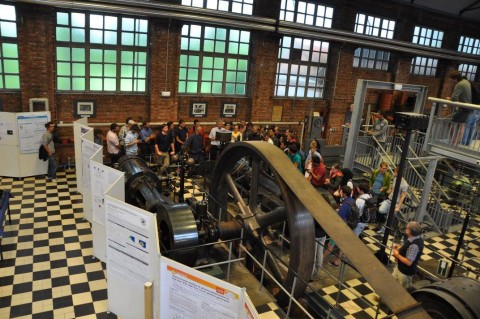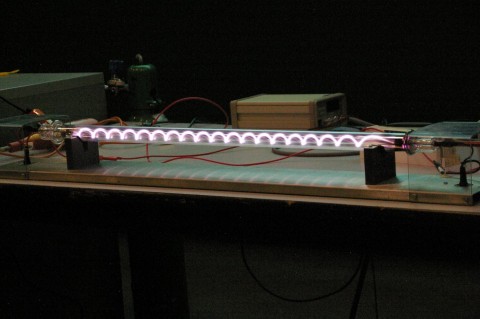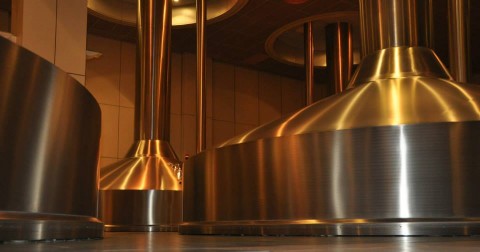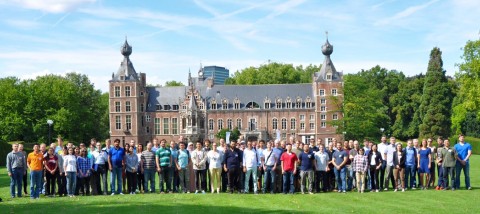12th Carolus Magnus Summer School
Report by Julien Denis. Powered by FuseNet
Between August 24th and September 4th, I attended the 12th Carolus Magnus Summer School in Leuven, Belgium. It was my first experience abroad as a PhD student and after two weeks of study there, I can say that it is worth going in Belgium even if it is not the best place to enjoy summer!
I arrived in Leuven on Sunday August 23rd around 8pm (after 7 hours of train). It was quite late and the weather was… rainy (as usual in Belgium). But anyway, I received a very warm welcome from the summer school organizers. After a short bus journey, I could discover the place where I would live during two weeks. The student’s residence was modern and clean and at first sight the room was more than correct. At first sight only because I quickly found out that there was neither shower nor toilet in the room. We had to share them with all the persons living in our corridor. Anyway, let’s go back to student life!
The lectures started the following day for two weeks. They took place in a wonderful site on the campus of KU Leuven University: the thermomechanical laboratory. But do not misunderstand me! Even if we were surrounded by steam engines and other plane reactors, we were there to study F.U.S.I.O.N.!

Figure 1: KU Leuven thermomechanical laboratory (Photography by K. Crombé)
The summer school aimed to introduce basic knowledge about fusion plasma, plasma surface interaction, and plasma facing component technologies. Some lectures were also dedicated to the fusion strategy and next step fusion machines. Most of the lectures focused on the tokamak configuration. However, we also had some classes about stellarators.
The first week started with an introduction about fusion, from the basic principles to the different types of fusion machines. Then lectures covered fundamental notions on plasma, such as particle motion, transport in tokamak (classical and neoclassical), magnetohydrodynamics, kinetic theory, plasma turbulence, etc... Others focused on material and Plasma Facing Components (PFCs) technologies: an overview of PFCs design was done and we discovered new foreseen technologies for tungsten PFCs.
The second week was more focused on waves in plasmas, plasma surface interaction and diagnostics. We learnt how to heat the plasma with waves and how to drive currents inside it. We also saw that radiation is the best plasma physicists’ friend to understand what is going on inside fusion plasmas thanks to spectroscopy methods. We also had the pleasure to visit the research center of Jülich (Forschungszentrum Jülich, Germany). We were welcomed in the Institute of Energy and Climate Research (IEK). The day was divided in two parts. First, we had lectures on subjects that are studied in this Institute, such as neutral physics or ergodic magnetic field. Then we visited their different facilities, among which the tokamak TEXTOR. This tokamak is unfortunately under dismantling but we had the chance to see the interior of the vacuum vessel, which is not so common! We also had the opportunity to discover other machines such as the linear device PSI-2. Finally, the summer school ended by presentations on future fusion experiments from ITER to DEMO reactor. We also had the lecture “How to fly a tokamak?” during which we realized that controlling a tokamak was not straightforward.
Moreover, two poster sessions were organized to make students exchange on their research topics.
Two night sessions were also organized during the summer school. Tony Donné, the Eurofusion programme manager, gave us an overview of the European strategy on fusion and the future plans of the organisation. Then, some crazy scientists from Eindhoven University of Technology have made a spectacular demonstration of their weird plasma devices.

Figure 2: Evening lecture: Exotic plasma show (Photography by K. Crombé)
Organizers had also planned external activities during the night. We had the pleasure to visit the nice Leuven city. A really sympathic guide made us discover all the beautiful places and monuments of this famous old town, such as the city hall, St. Peter's Church or the old market place. We also visited the biggest brewery of Belgium, which produces the famous beer Stella Artois. We learnt a lot about the brewing process and we were astonished by the huge fermentation tanks and the supersonic bottling of bottles and cans.

Figure 3: Fermentation tanks (Photography by R. Rochford)
Concerning the food, there were both vegetarian and normal meals. We had breakfast, lunch and dinner at the same place: a student restaurant. The breakfast was complete and good. For lunch, we only had one sandwich and a drink and for dinner, only a dish and a drink. Fortunately there was a food store close to the residence.
I really enjoyed my stay in Leuven. Lectures were truly interesting and all the professors were very pedagogue. Organization was perfect (except the lack of food, which is normal regarding the price of the summer school) and the program was rather complete. It might have been worth having some practical classes to assimilate the theory. Anyway, if you are new in the world of fusion, I truly recommend this summer school, which is generic and gives a wide overview of research in fusion. I particularly would like to thank summer school organizers as well as all the professors who came to share their knowledge. Eventually, I truly would like to thank FuseNet for giving me the opportunity to participate to this event.

Figure 4: Group photo in front of the Arenberg Castle (Photography by K. Crombé)
